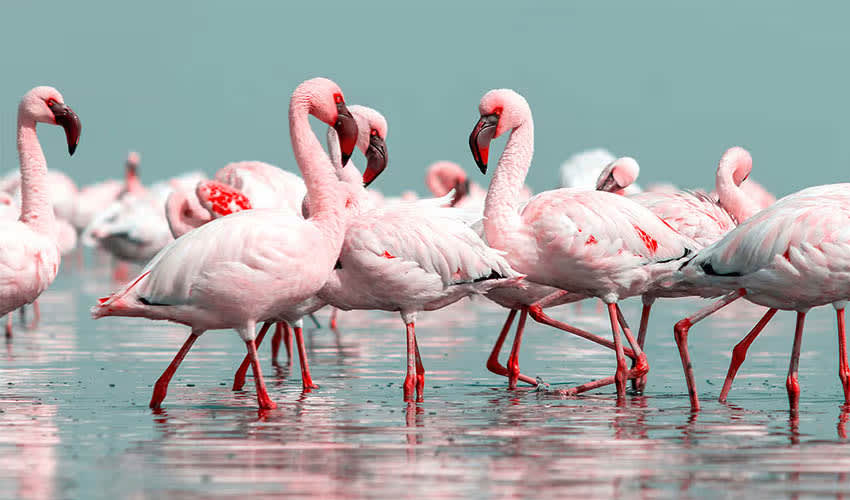Phoenicopteriformes – Flamingos
Flamingos get their unique pink color from the carotenoids in the algae they eat
The distinguished order housing all flamingo species presents an intriguing tapestry of avian diversity, where these majestic waterfowl reign supreme with their striking characteristics and behaviors. Among the illustrious flamingo family, the Greater flamingo stands as a towering emblem of elegance, reaching heights of up to 1.4 meters (4.7 feet). At the same time, its miniature counterpart, the Lesser flamingo, captivates with its more modest stature, measuring just over 70 centimeters (2.5 feet) tall.
The flamboyant flamingos are renowned for their remarkable heights and distinctive posture while standing, often depicted as gracefully balanced on a single leg. This peculiar behavior has long puzzled observers and researchers, sparking numerous theories ranging from thermoregulation to energy conservation, yet the definitive reason remains a subject of ongoing scientific inquiry and speculation.
In addition to their captivating stance, flamingos exhibit an array of specialized adaptations tailored to their unique aquatic lifestyle. Utilizing their webbed feet with precision, they deftly stir up sediment from the depths of the waterbody while their uniquely designed bills serve as efficient filtering mechanisms, extracting shrimp, algae, mollusks, and other small organisms from the muddy substrate. This unique feeding strategy sets flamingos apart from other avian species, showcasing their unparalleled adaptability to their watery habitats.
Despite their serene demeanor, flamingos possess a surprising capacity for aggression, particularly during the nesting season when territories are fiercely defended. Intricate courtship rituals, vocalizations, and territorial disputes characterize this period, offering a glimpse into the complex social dynamics and hierarchical structures within flamingo colonies.
Beyond their physical traits and behaviors, flamingos hold profound cultural significance and have inspired awe and admiration across civilizations. Their vibrant plumage, enchanting mating displays, and enigmatic lifestyle have cemented their status as beloved symbols of elegance, resilience, and grace in the natural world.
Families in this order
Flamingos get their unique pink color from the carotenoids in the algae they eat

